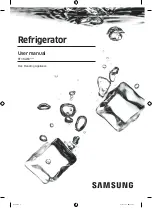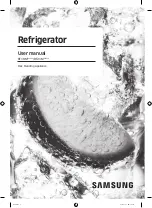
TK 56433-5-MM-EN
59
Refrigeration Maintenance
N
No
otte
e:: The following procedures involve servicing the
refrigeration system. Some of these service
procedures are regulated by Federal, and in
some cases, by State and Local laws.
In the USA all regulated refrigeration service
procedures must be performed by an EPA
certified technician, using approved equipment
and complying with all Federal, State, and Local
laws.
Refrigerant Charge
Testing The Refrigerant Charge With An
Empty Trailer
If the unit has an insufficient charge of refrigerant, the
evaporator will be “starved” and the box temperature
will rise even though the unit is operating. The suction
pressure will drop as the refrigerant charge decreases.
If the unit has an overcharge of refrigerant, the unit
may not cool properly and the suction and discharge
pressure may be high. The charge may be determined
by inspection of the refrigerant through the receiver
tank sight glasses with the following conditions
established:
1. Place a test box over the evaporator.
2. Install a gauge manifold.
3. Use the Service Test Mode to run the unit in high
speed cool. Refer to the appropriate Diagnostic
Manual for specific information about the Service
Test Mode.
4. Use the microprocessor thermometer to monitor
the return air temperature.
5. Run the unit on high speed cool until the air in the
box is at 0 F (-18 C). By allowing the box to leak a
small amount, you will be able to maintain 0 F (-18
C).
6. The suction pressure should be 15 to 20 psig (103 to
138 kPa).
7. The discharge pressure should be at least 290 psig
(2000 kPa). If the pressure is below this, it can be
raised by covering a portion of the condenser grille
with a piece of cardboard to block condenser
airflow.
8. Under these conditions, refrigerant should be
visible in the receiver tank sight glass. If refrigerant
is not visible in the receiver tank sight glass, the
unit is low on refrigerant.
Testing the Refrigerant Charge with a
Loaded Trailer
1. Install a gauge manifold.
2. Use the Service Test Mode to run the unit in high
speed cool. Refer to the appropriate Diagnostic
Manual for specific information about the Service
Test Mode.
3. Build up and maintain 290 psig (2000 kPa) of head
pressure. If the pressure is below this, it can be
raised by covering the roadside condenser grille
with a piece of cardboard to block condenser air
flow.
4. Cool the compartment to the lowest temperature
required.
5. Check suction pressure. It should be 15 to 20 psig
(103 to 138 kPa).
6. Under these conditions, refrigerant should be
visible in the receiver tank sight glass. If refrigerant
is not visible in the receiver tank sight glass, the
unit is low on refrigerant.
Testing for an Overcharge
Use the following procedure to identify a Thermo King
unit with an excessive refrigerant charge:
1. Install a calibrated gauge manifold on the
compressor.
2. Use the Service Test Mode to run the unit in high
speed cool. Refer to the appropriate Diagnostic
Manual for specific information about the Service
Test Mode.
3. Operate the unit in high speed cool long enough to
stabilize system pressures and reduce the box
temperature to approximately 60 F (16 C) or colder.
4. Observe discharge pressure and cover the
condenser to increase the discharge pressure
approximately 75 to 100 psig (500 to 690 kPa) above
observed pressure.
N
No
otte
e:: If the liquid level in the receiver sight glass
drops during step 4, the unit is not
overcharged and it is not necessary to
complete the rest of the procedure.
5. Remove the condenser cover to rapidly reduce
discharge pressure.
6. Observe the receiver tank sight glass and the unit
discharge pressure.
7. By the time the discharge pressure drops
approximately 50 psig (345 kPa), the liquid level in
the receiver tank should drop.
a. When the discharge pressure stabilizes, the
liquid level will rise.
b. If the liquid level will not drop, the unit most
likely has an overcharge of refrigerant. The
refrigerant level should be adjusted.
To adjust the refrigerant level:
















































